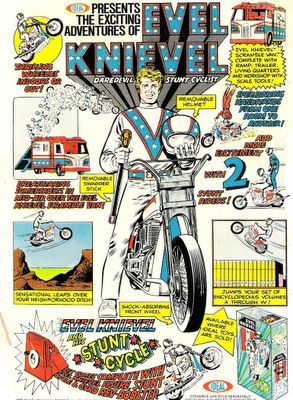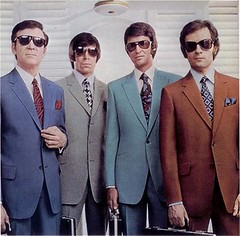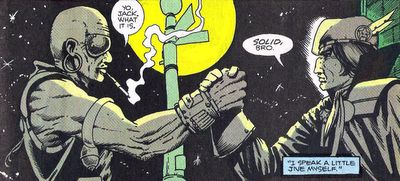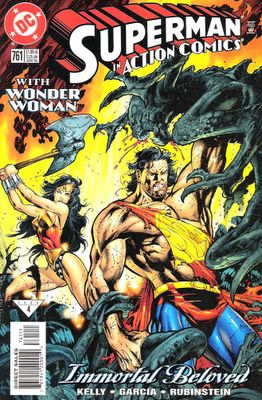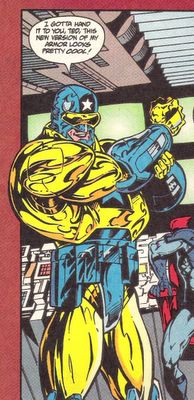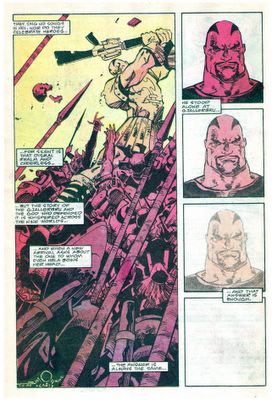
Does anybody love The Red Skull?
I don’t mean like, physically or anything. That would be gross.* I mean does anybody love The Red Skull the same way I love Dr. Doom? I don’t think so. The guy’s a fucking Nazi, for Chrissakes, he’s one of those villains that you actually want to see get their comeuppance. I don’t know about you, but I’m always rooting for Captain America to sock that creep right in his hideous kisser – pow! Take that, Ratzi!
And that’s why I love this issue so much: as you can see by the cover, it’s all about The Red Skull getting his ass handed to him by Magneto for being a dirty Nazi rat bastard. Simple as that.
I’ll save my diatribe about Magneto for another post – let’s just say that he used to be my favorite villain back in the day, when I thought his name was pronounced the way it’s spelled. Then I found out it’s pronounced “Mag-neat-o!” and my fickle affections drifted towards Victor Von Doom instead. I’m sorry, I just can’t get behind somebody named Mag-neat-o. I have my pride.
This issue (with solid art by Kieron Dwyer) takes place after the Acts of Vengeance! Storyline that ran through the non-mutant Marvel titles. In Acts of Vengeance! (you have to put the exclamation point in there, much like Viva Knieval!) a bunch of arch-villains were drawn together by a mysterious but powerful stranger (Loki) in a plot to destroy Earth’s heroes. The idea was they would switch the foes they normally fought and take the heroes off-guard that way. Great plan, you can guess how it worked out for the villains.
Two of the arch-villains brought together in this scheme were The Red Skull, a WWII era Nazi war criminal and Magneto, the survivor of the German concentration camps that killed his family. The writing was on the wall, a showdown had to happen, and leave it to Marvelous Mark Gruenwald to write the inevitable Butt-Kicking of Titans.
It starts off pretty simply: Magneto busts into The Red Skull’s fortified offices, and demands to know if he’s the real Red Skull – because if he is, the Pain Train’s comin’. Whoo whoo!
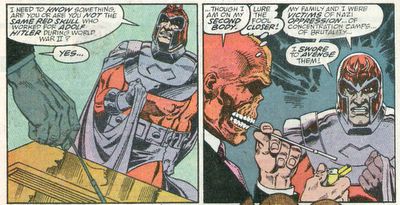
Captain America actually appears in Captain America #367, but his role is largely incidental. The real focus of the issue is just Magneto trying to catch The Red Skull and kick his head in. I loved this comic because it totally makes sense – the plot is a direct and inevitable result of the personality and psychology of the two main characters. Plus, you know who’s going to win. Come on, The Mutant Master of Magnetism versus a fascist in a Halloween mask? Magneto regularly takes on entire teams of superheroes – and wins. The Red Skull regularly takes on Captain America – and loses, unless he’s got a Cosmic Cube up his sleeve like the rotten Nazi cheater he is. Is there any doubt who wins here?
Gruenwald, who we’ve previously established as the Best Damn Cap Writer Ever, doesn’t play favorites or employ The Riddler Factor to give The Red Skull an edge. No, pretty much from the beginning the Skull is playing “D” while Magneto presses the offensive. No matter what defenses The Red Skull employs, Magneto keeps coming, until ultimately The Red Skull is just running for his life like a Crystal Lake camper. But before he runs screaming like a girl, The Red Skull throws everything at his pursuer, to no avail:
-Hidden floor gun? Ineffectual.
-Squad of Aryan goons with guns? They get blasted.
-Dust of death hidden in cigarette? Rendered harmless by force field.
-Plastic bubble? Slows Magneto down for like, a second.
-The Controller? Don’t make me laugh.
-Thermal blasting robot? Who sends a robot against Magneto?
-Squad of Red Skull robot look-alikes? Forget about it.
Nothing works.
Finally The Red Skull tries to escape on a subterranean railroad but Magneto catches up with him by magnetically fucking up the railway, warping the tracks. I guess next time you'll be making that shit out of plastic, eh Nazi?
The Red Skull wakes up a little later, and things don’t look too good for him. Check it out (click to enlarge):
That’s cold. Yep, Magneto leaves The Red Skull to rot in a dark tomb with little hope of escape. Notice I didn’t say “no hope of escape,” because of course The Red Skull eventually does escape Magneto’s cell, a few pounds lighter and even meaner than before. And that’s okay, because that just means we as readers get the pleasure of watching Cap beat him up again and again.**
However, if it were me writing and not Gruenwald, I’d have ended the book a little differently:
*Not because he’s a dude, because he’s got a frickin’ red skull for a face. Try some Oil of Olay, Skull.
** Until he gets his ass killed in Ed Brubaker’s current run on Captain America.




